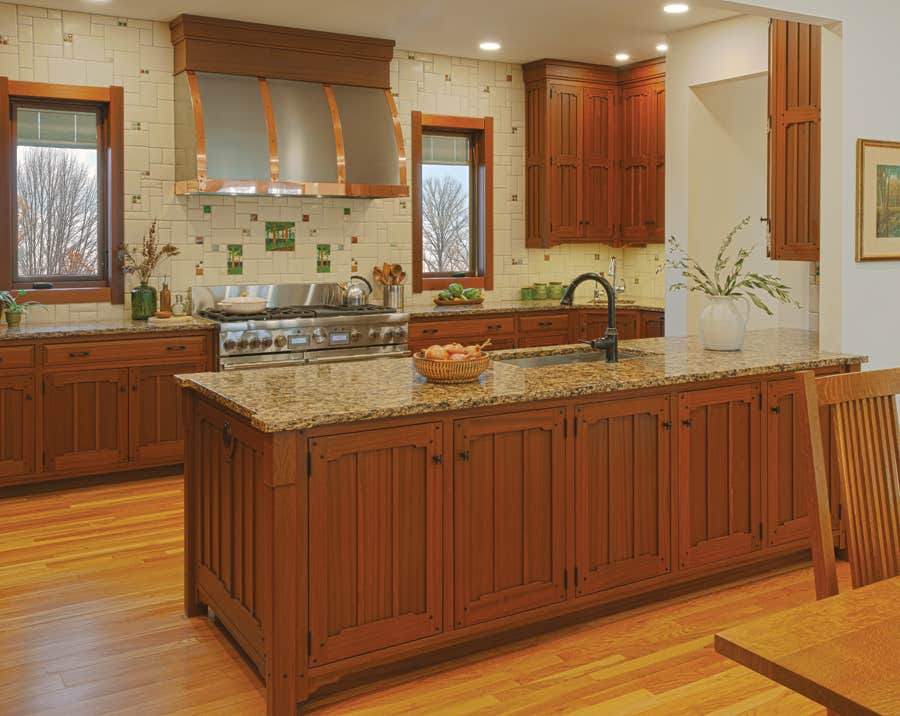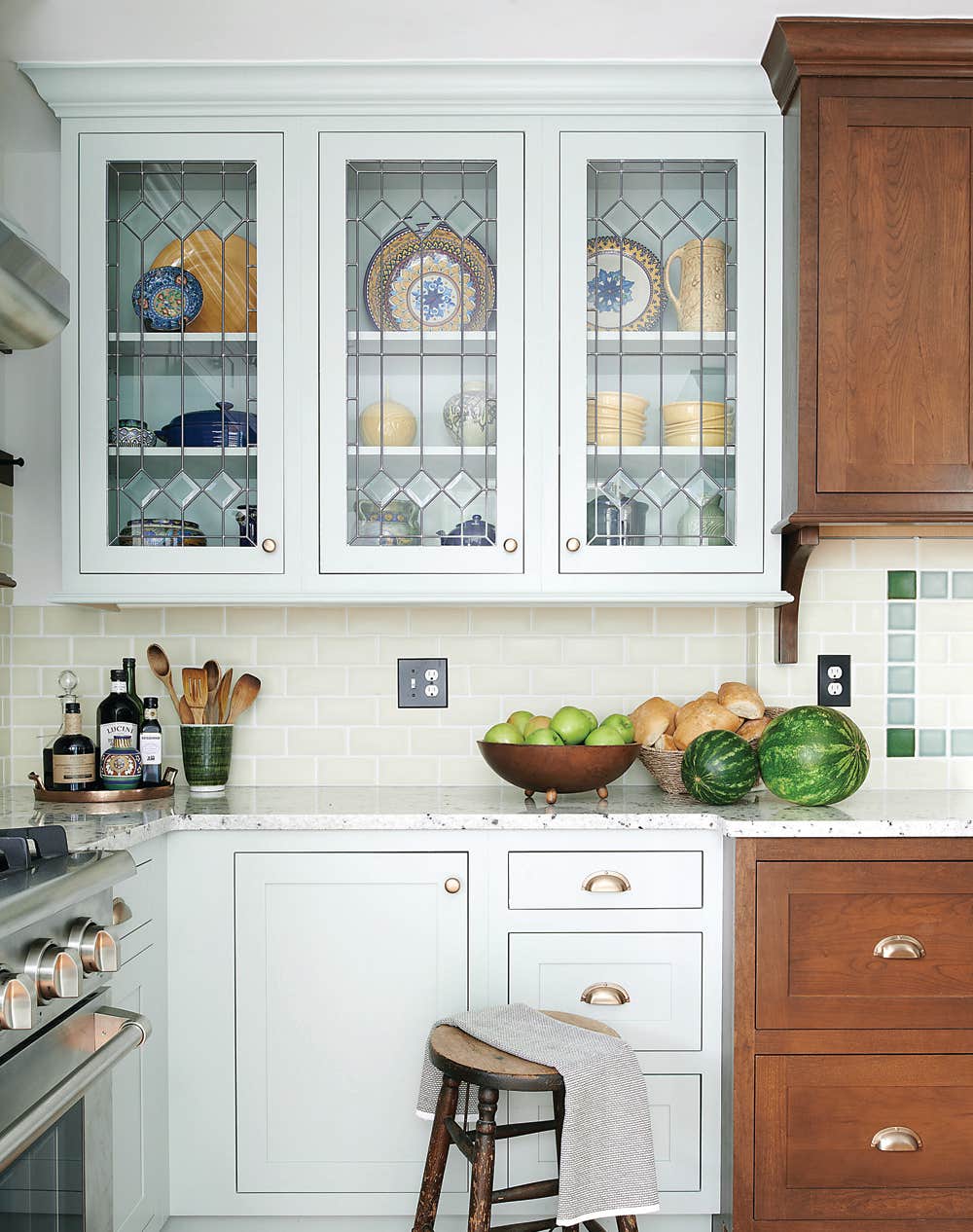Today’s Arts & Crafts Kitchens
It’s easy to understand why this style is popular for kitchens, whether remodeled or brand new. Here’s a look at the various elements that go toward making a stunning revival kitchen.
A case has been made for the true bungalow-era kitchen in Arts & Crafts Homes and Old-House Interiors magazines, and in Jane Powell’s bestselling book Bungalow Kitchens. Those kitchens from the first quarter of the 20th century were smallish rooms, separated from the rest of the living area, “sanitary” in their use of white tile and ivory enamel paint. Cabinets were plain, the floor was linoleum, and lighting was utilitarian.
It’s a good model to follow if you are restoring a bungalow. It’s an easy look to capture, and it’s just as efficient and easy to maintain as ever. Even with the addition of a few extra details, it won’t cost an arm and a leg.
So why are so many people ignoring precedent and choosing high-end, quarter-sawn oak cabinets, mica lanterns, handmade tile, and rubbed bronze hardware for their kitchens?
For one thing, we don’t use kitchens today the way we did in 1915. Rather than a service room, the kitchen has become a public center of the house, outfitted more like the living and dining rooms. In renovations, the original kitchen is often made larger (perhaps with a rear addition) and is opened up to the rest of the house. At that point, the plain white enamel look becomes the anachronism. Finally, the Arts and Crafts Revival that is in full swing has introduced its own conventions. The beautifully detailed kitchen is one of them.
The idea works for many types of houses, not just bungalows. It’s become the default style for much new construction. It’s also become a standard course for 19th century houses, because A&C-era kitchens had built-in cabinets, counter space, electricity—all more appealing than the typical Victorian larder and scullery.
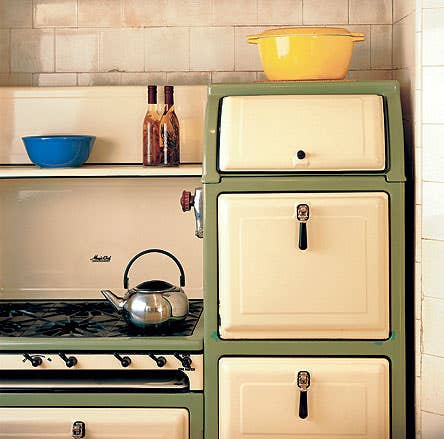
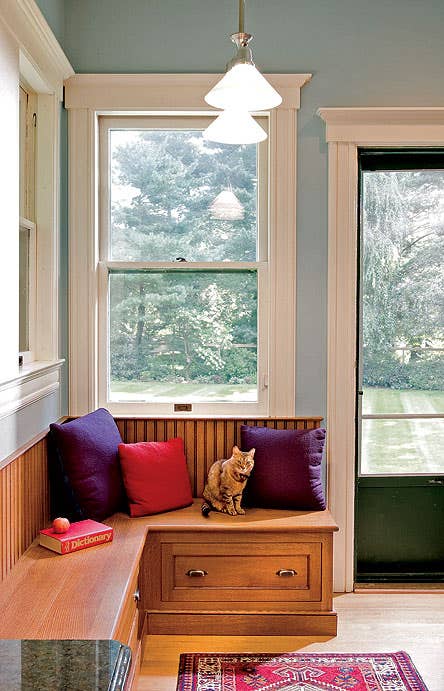
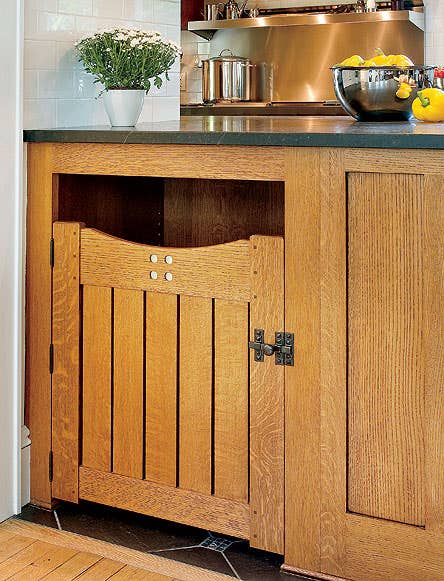
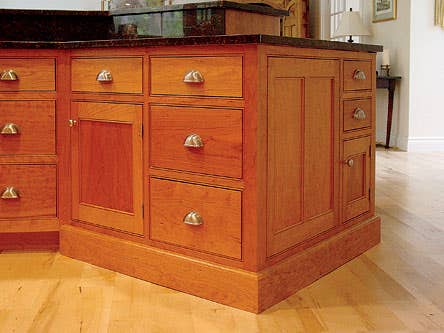
The new Arts & Crafts kitchen is based on a handful of materials and motifs, shown here in kitchens that were updated or remodeled, as well as in newly constructed houses. The room starts with cabinetwork: often in oak or cherry and with period-style kicks, door and drawer construction, and furniture details. (Built-ins, window seats, and breakfast nooks all have made a comeback.) Countertops often vary in the room; wood may be used along with soapstone, marble, or tile. Arts and Crafts-style hardware is the finishing touch.
Options in art tile today far exceed those of a century ago—it’s so hard to choose! Many people use artisan-made tile as an arresting backdrop for a room that straightforwardly incorporates modern appliances. An artisan-made copper or zinc hood adds textured color and craftsmanship to make the stove (or cooktop) the centerpiece of the kitchen. The use of a stunning antique (a ceiling fixture, a Hoosier cabinet, a Magic Chef stove) lends authenticity even when the room is brand new. Stenciled or embroidered textiles for windows and table add just the right amount of Arts and Crafts design motifs and an old-fashioned softness. For unbeatable authenticity, many people collect kitchenware from the Twenties or Thirties, some of which is available in reproduction.
Copper, art tile, naturally finished wood, stone, period hardware and lighting come together in a high-quality, artisan-made, warm and textural kitchen, a room at the center of family life.
Arts & Crafts Kitchen Resources
National cabinet companies with an A&C specialty, and two important books.
Companies
- Cook & Cook (207) 885-0767, cookandcookcabinetry.com
- Crown Point Cabinetry (800) 999-4994, crown-point.com
- The Kennebeck Company (207) 443-2131, kennebeccompany.com
- N.R. Hiller Design (812) 825-5872, nrhillerdesign.com
- Plain & Fancy (800) 447-9006, plainfancycabinetry.com
Books
- Bungalow Kitchens by Jane Powell and Linda Svendsen [Gibbs Smith, 2000]
- The New Bungalow Kitchen by Peter LaBau [Taunton Press, 2007]
Patricia Poore is Editor-in-chief of Old House Journal and Arts & Crafts Homes, as well as editorial director at Active Interest Media’s Home Group, overseeing New Old House, Traditional Building, and special-interest publications.
Poore joined Old House Journal when it was a Brooklyn-brownstoner newsletter in the late 1970s. She became owner and publisher and, except for the years 2002–2013, has been its editor. Poore founded the magazines Old-House Interiors (1995–2013) and Early Homes (2004–2017); their content is now available online and folded into Old-House Journal’s wider coverage. Poore also created GARBAGE magazine (1989–1994), the first unaffiliated environmental consumer magazine.
Poore has participated, hands-on, in several restorations, including her own homes: a 1911 brownstone in Park Slope, Brooklyn, and a 1904 Tudor–Shingle Style house in Gloucester, Massachusetts, where she brought up her boys and their wonderful dogs.




